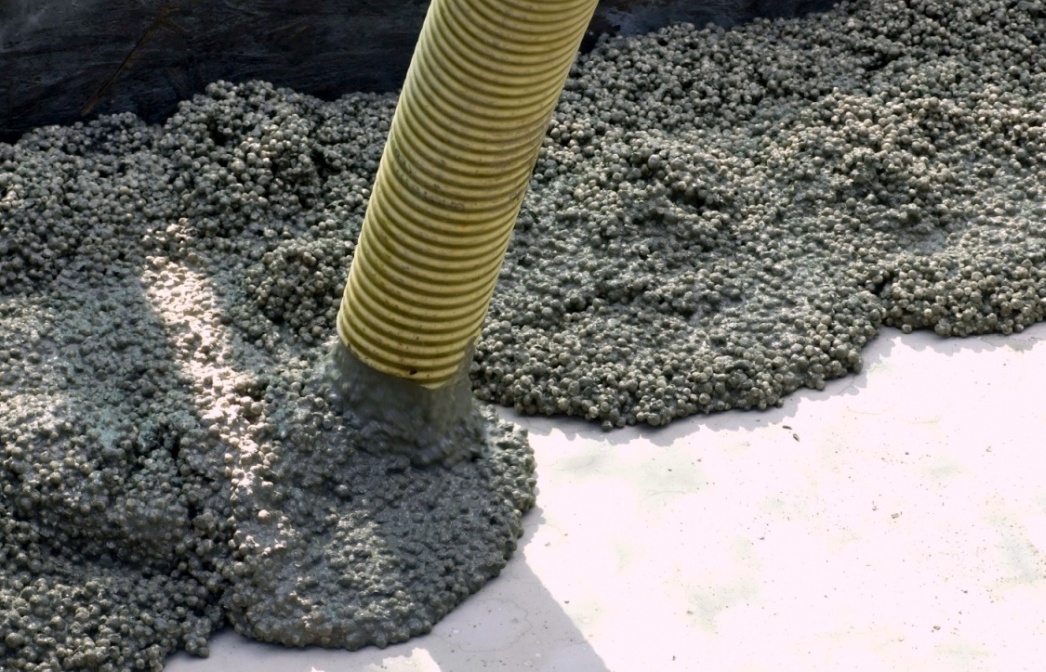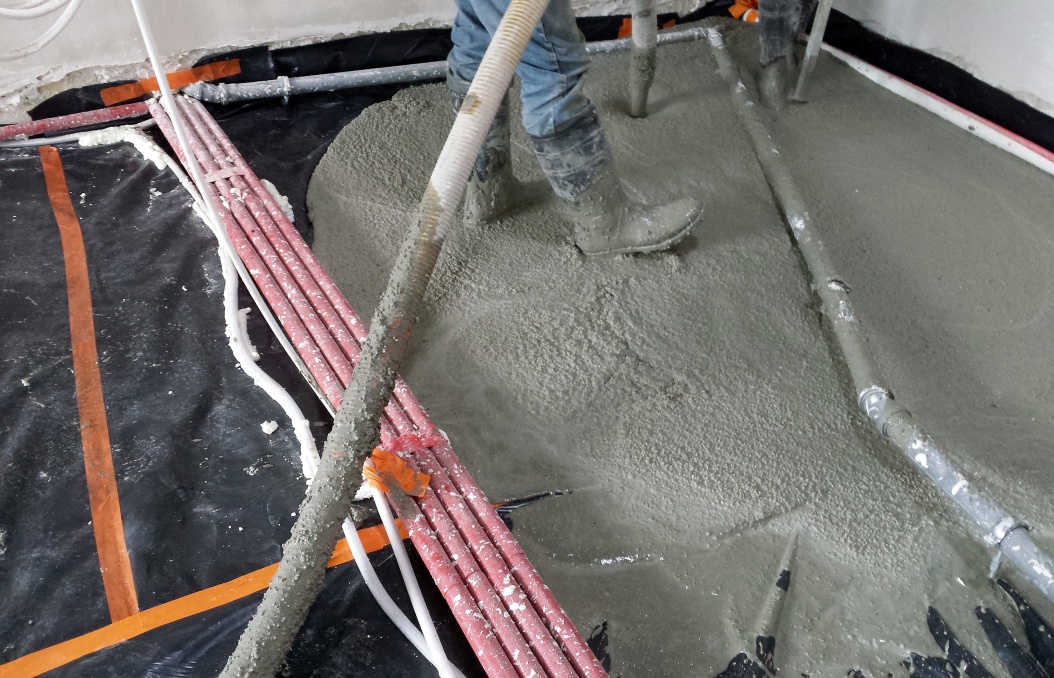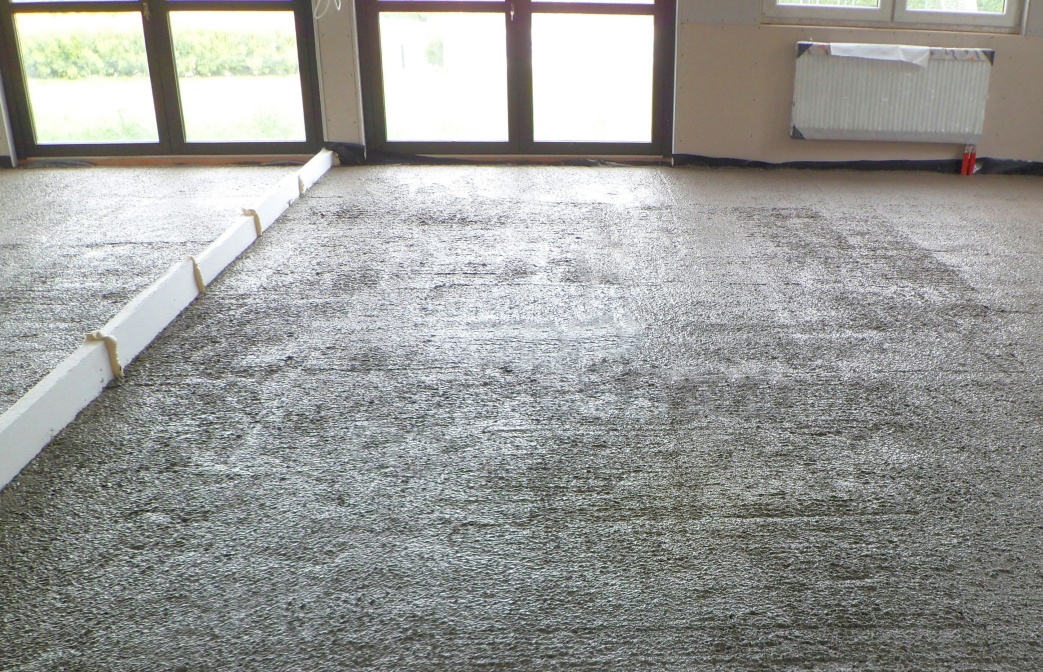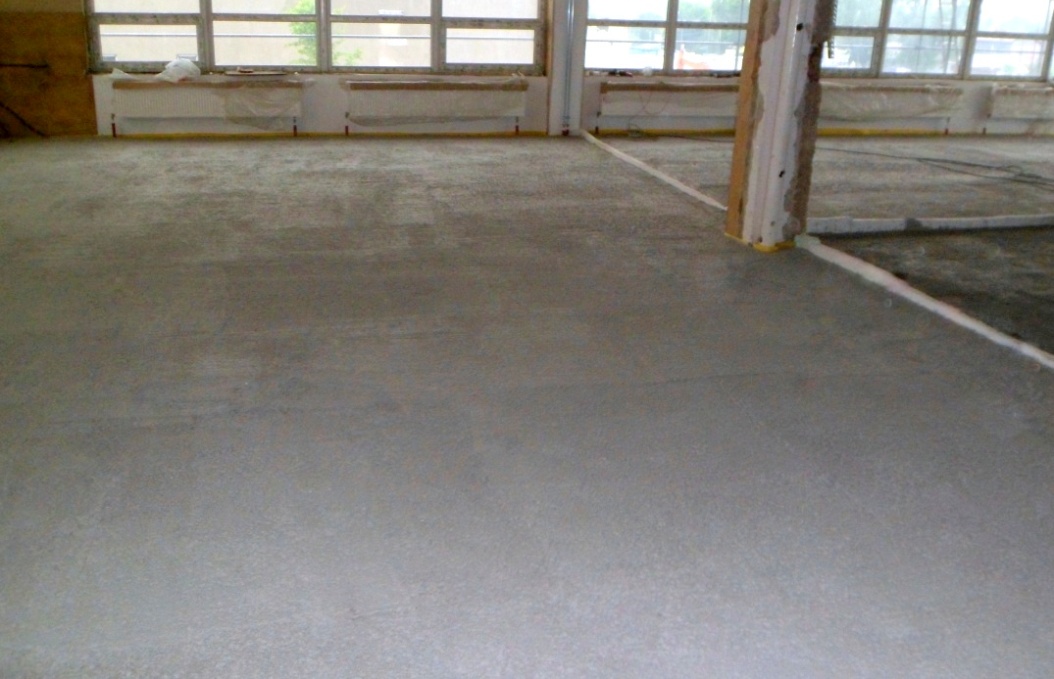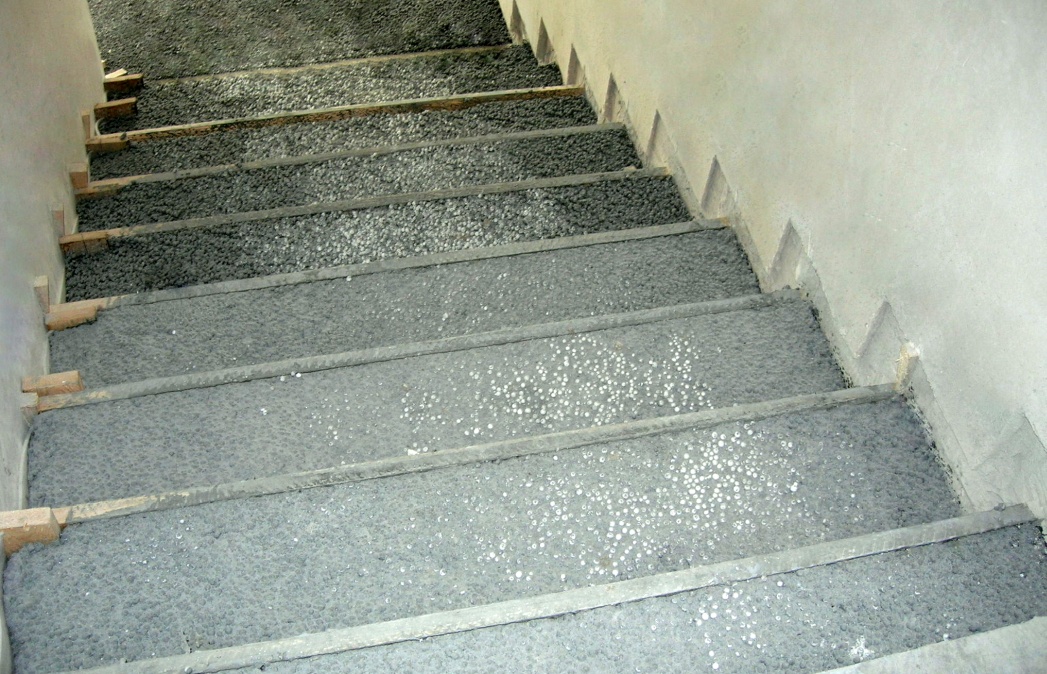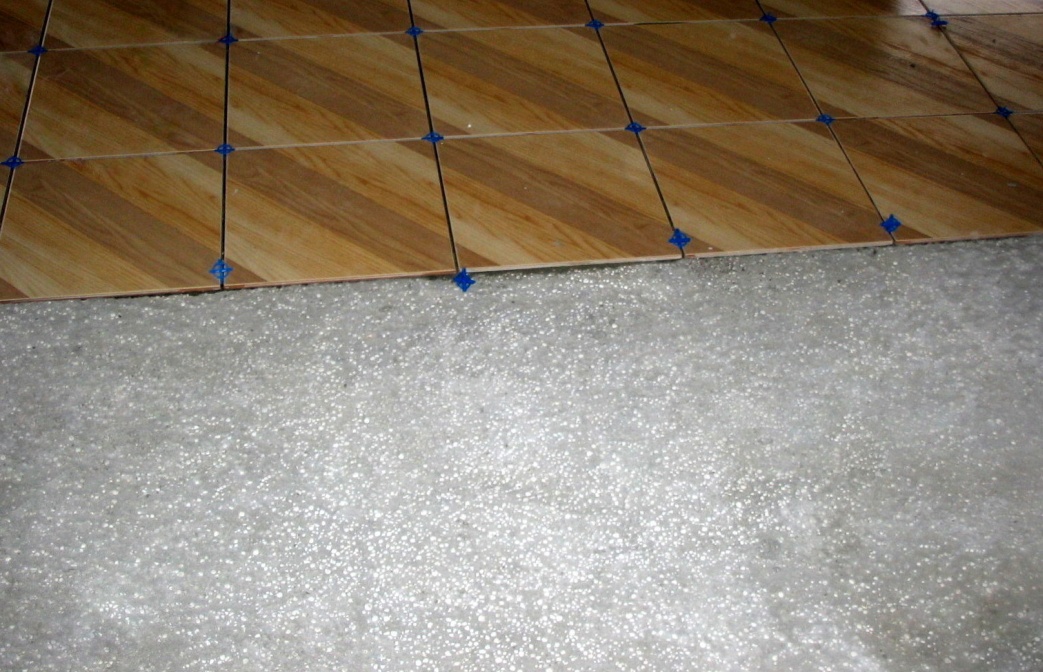Frequently Asked Questions (FAQ)
- What is the weight of the POLYTECH 20/80 lightweight concrete (styroconcrete) screed?
The weight of POLYTECH 20/80 when dry is about 260 kg/m3. - What are the differences between the individual POLYTECH styroconcrete classes (types)?
What is different is the polystyrene foam and cement mixing ratio. This affects the technical parameters of the material, particularly its compression strength and thermal insulation performance.
The 20/80 type is a dense and malleable material, while the 30/50 and 35/50 types are fluid materials. - Does the POLYTECH styroconcrete have to be hardened with a pressure layer?
It is necessary if a floor underlay is to be used. According to the national technical approval for POLYTECH STYROCONCRETE, a floor underlay made of the POLYTECH STYROCONCRETE thermally-insulating mortar should be at least 4 cm thick, protected from impact and local pressure in areas exposed to mechanical damage. Inside a building, a layer of anhydrite mortar can be applied on a layer of separating material (such as plastic film). No pressure layer is necessary if you use the POLYTECH STYROCONCRETE types 20/80 or 25/80 as a thermally-insulating layer on a roof that is exposed only to weather when that layer is directed treated with waterproofing material (such as heat-sealable roofing felt), EPDM film or other material). - When should a hardening layer on a screed layer of the POLYTECH STYROCONCRETE type 20/80 be performed? We recommend that addition work, especially the pressure layer (a hardening layer) of a floor underlay, should be carried out as soon as the screed layer hardens. This will usually after about 20 hours, depending on the ambient temperature and relative humidity levels.
- How should a hardening layer on a screed layer of the POLYTECH STYROCONCRETE be performed?
A hardening layer of a C 12/15 cement mortar and at least 2 cm thick should be performed using the "wet-on-wet" method when the screed layer hardens. This will usually after about 20 hours, depending on the ambient temperature and relative humidity levels. Remember to make expansion joins according to the best practices for construction. - How much screed can be made with one YELLOW BAG of the modified granulated polystyrene foam material? Mixing 50 kg of cement and about 30 litres of water with the contents of one bag of the POLYTECH granulated material will produce 0.25 m3 of the POLYTECH 20/80 mortar. This is enough for 5 m2 of a surface with a screed layer thickness of 5 cm.
- How to keep the POLYTECH lightweight concrete (styroconcrete) screed in good condition?
While the mortar is maturing and hardening, make sure to provide the right conditions for hydraulic binding. In particular, do not expose the surface to overheating, overcooling, overdrying, flooding or mechanical damage. You may consider covering the surface with plastic film or spraying it with water for protection. We recommend that addition work, especially the pressure layer (a hardening layer) of a floor underlay, should be carried out as soon as the screed layer hardens. This will usually after about 20 hours, depending on the ambient temperature and relative humidity levels. Under optimal conditions, the POLYTECH STYROCONCRETE 20/80 will reach its maximum resistance after 28 days. - How to prepare the POLYTECH STYROCONCRETE Type 20/80 (Yellow Bag) material in a concrete mixer? To make cement-and-polystyrene foam mortar mixture, empty the entire contents (or a half of the contents) of one yellow bag. In either case, you should first make cement milk (the entire bag or a half of the bag) by mixing cement with water to make a smooth mixture. Add a quantity of the modified granulated polystyrene foam (the yellow bag) to the cement milk in the right proportions. Mix it all in a concrete mix for 3-4 minutes. This is enough time to aerate the mortar and to increase its volume. When the entire amount of the granulated material is covered with cement, the styroconcrete is ready for use. Do not exceed the mixing time limit. The styroconcrete mixture should be applied to de-aerated within 15 minutes and left for a hydraulic bond to be formed.
- What cement should be used to make the POLYTECH STYROCONCRETE Type 20/80 (Yellow Bag)?
To make the POLYTECH STYROCONCRETE Type 20/80, you should use portland cement (CEM I, CEM II/B-S or A-S). Cement with a large amount of additives, particularly ash-based cement (CEM II/B-V), is not recommended. - Where can I buy modified granulated polystyrene foam? All POLYTECH products are available at the AKCES Building Materials Centre in Czechowice-Dziedzice (Poland) or some retailers and wholesalers in other parts of Poland. For the contact details of distributors, contact the POLYTECH sales team by calling +48 510 079 288.
- Can POLYTECH STYROCONCRETE be used if it is not recommended in the design documentation for my project? The the AKCES Building Materials Centre has a team of designers who specialise in designing technical solutions based on the POLYTECH technology and materials. Our specialists will modify your existing designs. They are also available to provide support and advice to external designers and project owners. They will provide you with design files in DWG or PDF format with drawings of typical solutions based on the POLYTECH technology and materials.
- What is the minimum thickness of a POLYTECH STYROCONCRETE screed layer?
A floor underlay made of the POLYTECH STYROCONCRETE thermally-insulating mortar should be at least 4 cm thick and not thicker than 50 cm. The thickness of the screed layer should be decided on a case-by-case basis, depending on its intended use. Feel free to contact our consultant or designer for support. - Is the POLYTECH STYROCONCRETE type 20/80 different from other lightweight concrete (or styroconcrete) materials? The main difference between the styroconcrete mixtures produced by some contractors and the POLYTECH STYROCONCRETE type 20/80 is that such mixtures are not officially approved for use in construction. If you use an unapproved building material in your project, the strength of the material is not guaranteed. As a result, the durability, thermal insulation performance or fire performance of the material are not guaranteed. If such styroconcrete is used to make a screed underlay, it is usually difficult to predice the parameters of the screed and its performance over time. A styroconcrete mixture made of cement mixed with ground polystyrene foam waste or granulated polystyrene foam (of any origin) without the addition of a plasticiser and without mixing the ingredients in the right proportions, or mixed for a period of time not suppported by any calculations, or mixed with the use of inappropriate equipment, is a total mystery. Such a mixture may fail to provide the required level of thermal insulation. It may break or be prone to scratches. All the risk of defects in the screed underlay, including the need to replace it, rests with the project owner, although you may be unaware of the quality of the material, particularly when it is the price only that you considered, without checking that the material has been tested and approved for use by the Polish Building Research Institute (ITB). The POLYTECH STYROCONCRETE mortars offer many benefits which have been confirmed by the Polish Building Research. This makes these mortars an increasingly popular choice in the construction market. If you choose the POLYTECH STYROCONCRETE mortar, you are given the guarantee that the material used at your building site meets all the technical requirements specified in the applicable regulations. This guarantee will be confirmed by a quality certificate.
